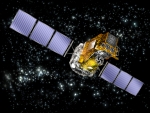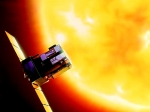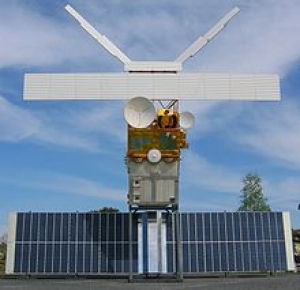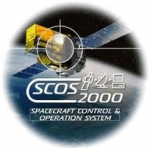Displaying items by tag: ESA
ESA - ESRIN (European Space Agency)
The ESA Centre for Earth Observation (also known as ESRIN) located in Frascati, Italy, is one of the five specialised centres of the European Space Agency (ESA) located across Europe.
Located in Frascati, a small town 20 km south of Rome in Italy, ESRIN was established in 1966 and first began acquiring data from environmental satellites in the 1970s.
Earth observation: Earth Observation data has grown in importance as more and more international and national agencies recognise the many uses to which it can be put. Satellites for Earth observation keep a constant watch over the Earth and the data they provide help to safeguard the planet in which we live. Since 2004, ESRIN has been the headquarters for ESA's Earth Observation activities.
A multi-faceted centre: A number of other activities are also carried out at ESRIN, each of which is making an important contribution to ESA’s work. Among other things the establishment hosts the ESA development team for the Vega Launcher.
INTEGRAL
INTEGRAL is the first space observatory that can simultaneously observe objects in gamma rays, X-rays and visible light.
The European Space Agency's INTErnational Gamma-Ray Astrophysics Laboratory (INTEGRAL) is an operational Earth satellite, launched in 2002 for detecting some of the most energetic radiation that comes from space. It is the most sensitive gamma ray observatory ever launched.
INTEGRAL is an ESA mission in cooperation with the Russian Space Agency and NASA. It has had some notable successes, for example in detecting a mysterious 'iron quasar'. It has also had great success in investigating gamma-ray bursters and evidence for black holes.
XMM-Newton
The XMM-Newton (X-ray Multi-Mirror Mission - Newton) is an orbiting X-ray observatory launched by ESA in December 1999 on a Ariane 5 rocket. It is named in honor of Sir Isaac Newton.
Its mission is turned towards deep space and aimes to increasing our knowledge of very hot objects created when the Universe was very young,
Originally known as the High Throughput X-ray Spectroscopy Mission it was placed in a very eccentric 48 hour elliptical orbit at 40°; at its apogee it is nearly 114,000 kilometres (71,000 mi) from Earth, while theperigee is only 7,000 kilometres (4,300 mi)
The satellite weighs 3,800 kilograms (8,400 lb), is 10 metres (33 ft) long and 16 metres (52 ft) in span with its solar arrays deployed. It holds three X-ray telescopes, developed by Media Lario of Italy, each of which contains 58 Wolter-type concentric mirrors. The combined collecting area is 4,300 cm². The three European Photon Imaging Cameras (EPIC) are sensitive over the energy range 0.2 keV to 12 keV. Other instruments onboard are two reflection grating spectrometers which are sensitive below ~2 keV, and a 30 centimetres (12 in) diameter Ritchey-Chretien optical/UV telescope.
The mission was proposed in 1984 and approved in 1985; a project team was formed in 1993 and development work began in 1996. The satellite was constructed and tested from March 1997 to September 1999. Launched in Dec 1999, in-orbit commissioning started Jan 2000. First images published Feb 2000. The original mission lifetime was two years, it has now been extended for further observations until at least 2010, and again until 2012, and technically could operate until 2018.
Observations are managed and archived at the European Space Astronomy Centre (formerly known as VILSPA) at Villafranca, Spain. The data are processed at the XMM-Newton Survey Science Centre at the University of Leicester, England.
The European satellite XMM-Newton (X-ray Multi Mirror), built under contract to ESA by a consortium of 35 European companies with Astrium as prime contractor, by far excels its predecessor, the Astrium-built ROSAT satellite.
SOHO (mission & spacecraft)
The Solar and Heliospheric Observatory (SOHO) mission purpose is to study the Sun from a point of gravitational balance.
The SOHO spacecraft has been built by a European industrial consortium led by Matra Marconi Space (now Astrium) that was launched on a Lockheed MartinAtlas IIAS launch vehicle on December 2, 1995 to study the Sun, and has discovered over 2100 comets. It began normal operations in May 1996.
It is a joint project of international cooperation between the European Space Agency (ESA) and NASA. Originally planned as a two-year mission,SOHO currently continues to operate after over fifteen years in space. In October 2009, a mission extension lasting until December 2012 was approved.
In addition to its scientific mission, it is currently the main source of near-real time solar data for space weather prediction. Along with the GGS Wind and Advanced Composition Explorer (ACE),SOHO is one of three spacecraft currently in the vicinity of the Earth-Sun L1 point, a point of gravitational balance located approximately 0.99 astronomical unit (AU)s from the Sun and 0.01 AU from the Earth. In addition to its scientific contributions, SOHO is distinguished by being the first three-axis-stabilized spacecraft to use its reaction wheels as a kind of virtual gyroscope; the technique was adopted after an on-board emergency in 1998 that nearly resulted in the loss of the spacecraft.
ERS - European Remote Sensing satellite
The European remote sensing satellite (ERS) was the European Space Agency's first Earth-observing satellite, injected into a Sun-synchronous polar orbit at a height of 782–785 km.
ERS-1 and ERS–2 were launched into the same orbit in 1991 and 1995 respectively. Their payloads included a synthetic aperture imaging radar, radar altimeter and instruments to measure ocean surface temperature and wind fields.
ERS-2 added an additional sensor for atmospheric ozone monitoring. The two satellites acquired a combined data set extending over two decades.
SCOS-2000
The Satellite Control and Operation System 2000 (SCOS-2000) is the generic satellite Mission Control System (MCS) software infrastructure developed and maintained by the European Space Agency (ESA/ESOC) in collaboration with European industry
ESA - ESOC (European Space Agency)
ESOC is the European Space Operations Centre, one of the centres of the European Space Agency (ESA).
Since its creation in 1967, the European Space Operations Centre (ESOC) in Darmstadt, Germany, has planned missions, operated more than 60 satellites and ensured that spacecraft meet their mission objectives. The mandate of ESOC is to conduct mission operations for ESA satellites and to establish, operate and maintain the necessary ground segment infrastructure.
ESA - ESTEC (European Space Agency)
The European Space Research and Technology Centre (ESTEC) is the European Space Agency's main technology development and test centre for spacecraft and space technology. It is situated in Noordwijk, South Holland, in the Netherlands.
At ESTEC, about 2500 engineers, technicians and scientists work hands-on with mission design, spacecraft and space technology.
ESTEC provides extensive testing facilities to verify the proper operation of spacecraft, such as the Large Space Simulator (LSS), acoustic and electromagnetic testing bays, multi-axis vibration tables and the ESA Propulsion Laboratory (EPL). Prior to the launch of almost all equipment that ESA launches is tested in some degree at ESTEC.








